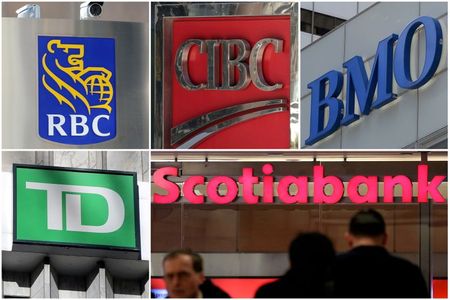By Ketki Saxena
Investing.com -- A recent report by RBC (TSX:RY) Capital Markets shows that approximately 60% of all existing mortgages with Canadian chartered banks are set for renewal within the next three years, and outlines that the renewal of mortgages at elevated interest rates over the coming three years might present significant challenges to Canadian banks.
This "payment shock" – the surge in costs upon renewal – carries risks potentially influencing loan and revenue trajectories at Canadian banks. This could also affect other credit forms.
The report states, “We believe there may be a spillover of credit losses onto other loans (i.e., unsecured credit and auto loans), but we do not yet see evidence of significant credit deterioration except for a specific subset of commercial real estate (office space).”
Unless there's a major drop in interest rates, the research anticipates an increase in credit losses starting in 2024.
“We believe there will be more than $186 billion of mortgages renewing in 2024 at the chartered banks in Canada and at current interest rates (for example, the five-year fixed mortgage rate of 5.54 per cent is over 180 basis points) higher than five years ago), a weighted average payment shock of 32 per cent could be expected,” the report notes.
For 2025, RBC foresees about $315 billion in mortgage renewals, many of which are at variable rates and are “currently negatively amortizing.” The estimated average payment shock for these renewals is projected to be around 33%, similar to the previous year.
The report expects the shock to be worst in 2026. “Fiscal 2026 renewals have the largest proportion of variable-rate mortgages and consequently, unless rates fall meaningfully, the payment shock could be as high as 48 per cent on a weighted average basis.”
The report also outlines strategies banks are implementing to mitigate these shocks. For example, customers are being provided options such raising monthly installments, transitioning to a fixed rate, making bulk payments, or lengthening the amortization period.
